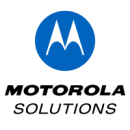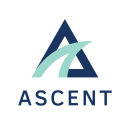
Extracting keywords from legal definitions. Transcribing emergency calls in real time. Personalizing customers’ search results and recommendations. Machine learning is revolutionizing the future — and it’s ultimately providing a better experience for users of the following three Chicago companies.
For example, at Ascent, team members use machine learning to collect and organize regulatory documents so that compliance officers can filter documents, focusing on the legal text that’s relevant to their business.
“Being able to quickly prototype a new model and put it into production allows us to tune our machine learning efforts directly to user needs,” Ascent Senior Data Scientist Keith Ingersoll said.
At Motorola Solutions, machine learning converts audio into spectrogram images to transcribe audio from emergency calls, which helps dispatchers remember important information like addresses and phone numbers. And at Nordstrom, machine learning is used to personalize shoppers’ experiences through advanced search and recommendation engines.
Below, Built In Chicago talked at length with tech leaders from the three companies to see how they’re applying machine learning and the ways it’s impacting their users.
Machine learning helps Nordstrom personalize customer’s shopping experiences through advanced search and recommendation engines, Senior Director of Data Science and Analytics Rossella Blatt said. Additionally, Blatt said the technology also plays a large role in the e-commerce retailer’s supply chain allowing them to optimize their processes.
What’s a surprising or interesting way your company is using machine learning?
Machine learning is woven into the fabric of everything we do at Nordstrom. We harness the power of artificial intelligence throughout all our functions, from product discovery to product assortment, supply chain, marketing and much more. Machine learning ushers each Nordstrom customer throughout their journey to optimize their experience and delight them.
We ensure that customers can find the best products, personalized just for them, through our advanced search and recommendation engines. We also use machine learning to listen to our customer feedback, both indirect (through their interactions) or direct (through tools like Style Swipes) to perfect our understanding of the customer preferences with time and elevate the quality of our service each time they interact with us.
Machine learning ushers each Nordstrom customer throughout their journey to optimize their experience.”
What impact has machine learning had on your business, product or the customer experience?
Machine learning also helps support our assortment planning decisions, making the engine dynamic and optimized for customers’ needs and value expectations. This helps us offer what is relevant to our customers and is designed to optimize the business strategy. Similarly, it is infused in our supply chain solutions, which allow us to get products closer to customers while optimizing a variety of competing priorities, like speed to customer, delivery, network balance and capacity, and more.
We strive to listen to our customers and learn what matters most to them. We leverage these insights to surface more personalized recommendations to customers through our various marketing touchpoints including social media and email.
Communications and analytics development company Motorola Solutions uses machine learning to improve the user experience. Principal Research Scientist David Kaleko said that the technology converts audio into spectrograms to transcribe emergency calls, enhancing call takers’ capabilities in managing 911 calls to save time and save lives.
What’s a surprising or interesting way your company is using machine learning?
One surprising way that Motorola Solutions is using machine learning is by using neural networks designed for image recognition to transcribe audio from emergency calls in real time, as in our 911 Smart Transcription product. We convert 911 calls into images (called spectrograms) and train our models to identify the unique shapes corresponding to particularly important words that dispatchers have to remember or write down themselves, like addresses and phone numbers. The decision to use this approach was the result of months of research and development working to balance the unique characteristics of emergency calls, the needs of our users and the amount of in-domain training data available to us.
We are leveraging machine learning to improve user experience by allowing software to adapt to the user’s needs.”
What impact has machine learning had on your business, product or the customer experience?
Public safety software can be complex and require substantial effort to learn to use. Because of this, we are leveraging machine learning to improve user experience by allowing software to adapt to the user’s needs instead. Our AI models (video, semantic audio and non-semantic audio, text) are constantly improving and learning as new data continually flows into them. We collaborate with UX designers and researchers to figure out how to intelligently build user feedback loops into products used by first responders who don’t have time to stop and provide explicit feedback throughout the day. Shipping software with built-in feedback mechanisms is a very different task than that of a lot of software we’ve delivered in the past.
What excites you most about the work you’re doing?
As a research scientist, working in the public safety space really excites me for two reasons. First, public safety data (audio, video and text) has its own unique flare, which makes machine learning development complex and challenging to deal with in an academic sense. You can’t just use out-of-the-box machine learning models on public safety data and expect them to work well.
Second, machine learning can make an enormous impact in the public safety space if used correctly, but models must be deployed with careful consideration about the impact of false positives and negatives. This adds yet another interesting dimension to our work, and I think the combined power of our user researchers, designers, and research scientists really differentiates Motorola Solutions.
At Ascent, a compliance automation solution, machine learning is integrated into the software development process and helps users collect and organize necessary regulatory documents, Senior Data Scientist Keith Ingersoll said. Once collected and organized, the machine-learning technology then adds metadata so that compliance officers can filter documents and focus on the legal text that’s relevant to their business.
What’s a surprising or interesting way your company is using machine learning?
The most interesting way we use machine learning at Ascent is how we integrate it with our software development process. My team is made of folks with expertise in business intelligence, product, full-stack web development, data engineering and machine learning. We all share a single goal and machine learning is just another tool. What this means is when we are faced with a problem posed by our internal users, we look at trade-offs such as building front ends versus building models to solve it. Data scientists fit in just like other engineers, and their skill set sets them apart in the same way we view designers or DevOps engineers.
With tighter team integration, our engineers and data scientists get a clearer view of each other’s work. Our data scientists are now implementing more spontaneous improvements with machine learning by seeing how our users interact with our software. Likewise, our engineers are now able to quickly point out implementation issues, saving our data scientists from spending time on projects that may be impossible to put into production later on.
Being able to quickly prototype a new model and put it into production allows us to tune our machine learning efforts directly to user needs.”
What impact has machine learning had on your business, product or the customer experience?
Ascent’s mission is to make complying with regulations easier. No company wants to be fined because they simply didn’t know about some regulations they were required to follow. Ascent helps companies discover these requirements by collecting and organizing regulatory documents, adding metadata so compliance officers can filter documents and focus on the legal text that is relevant to their business.
Adding this metadata to regulations is a laborious process, requiring lawyers to annotate thousands of legal documents. Speeding up this process is the biggest effect machine learning has on Ascent. We have a suite of models that work in tandem to extract keywords from legal definitions, parse bullets and indentation, group related paragraphs, classify paragraphs as legal requirements or clarifications — the list goes on. While each model on its own has an impact on the business, the framework we use to integrate multiple models is the key ingredient. Being able to quickly prototype a new model and put it into production allows us to tune our machine learning efforts directly to user needs.
What’s a part of your tech stack that you really enjoy working with, and how are you applying it in your work?
My favorite part of our tech stack is our container infrastructure. We have a framework that integrates AWS Fargate into our inference and training jobs, which makes it possible to automate continuous integration/continuous development with Github. When we merge pull requests, we have a system that builds a new container using the Dockerfile in the repository, runs tests inside the container and, if successful, pushes it automatically to Amazon ECR so it can be deployed into production.
We handle updating production models via Github and CI/CD as well. We have a system similar to the Terraform Atlantis workflow where we trigger and communicate with external training jobs via Github. Using a tool called DVC, we can effectively treat the model and data as artifacts stored in the Github repository itself, which means together with the Dockerfile, everything necessary for the model life cycle is stored in the same repository. I spend much less time tracking down files, dependencies and model versions with this approach, so it makes me very happy!












